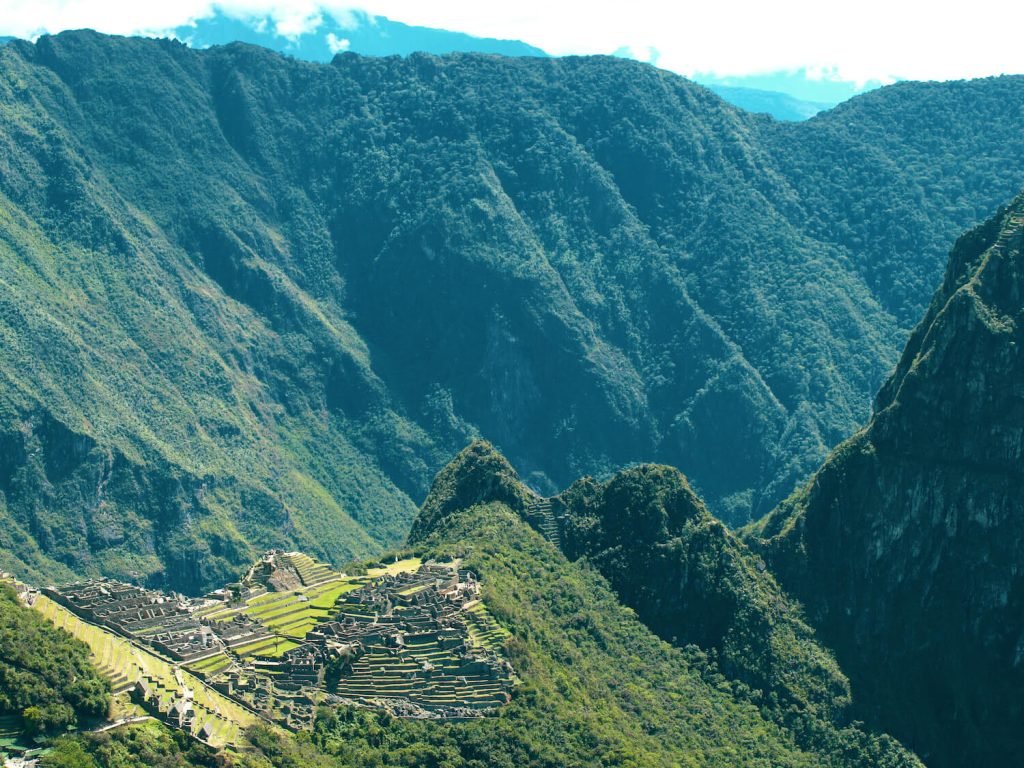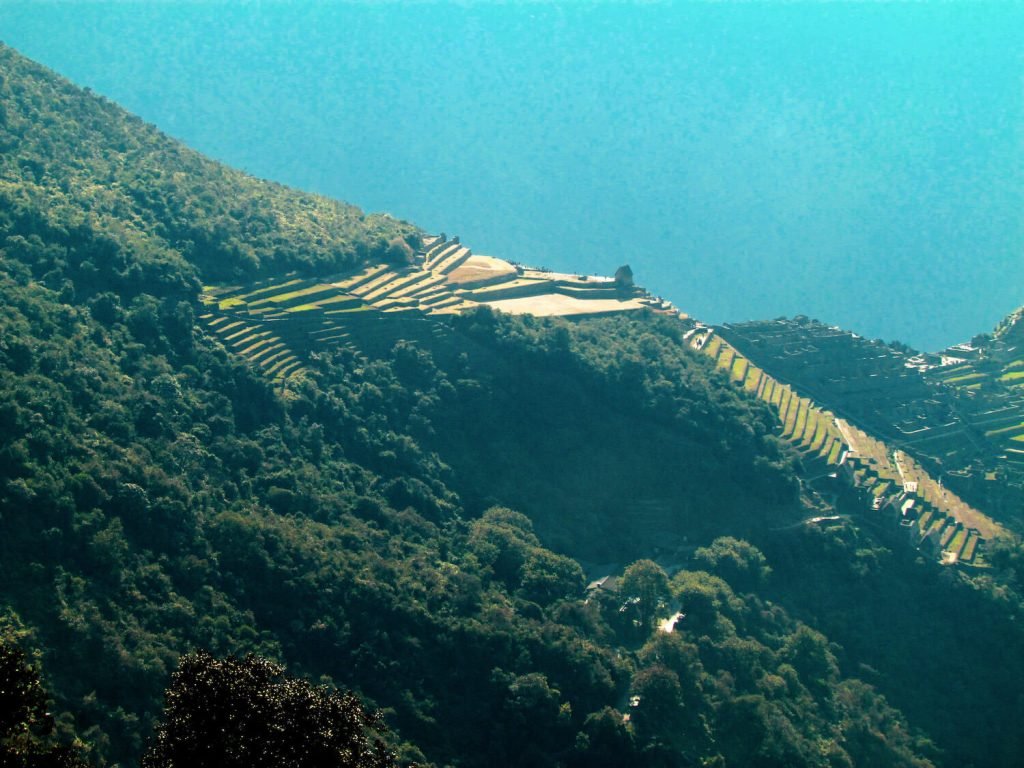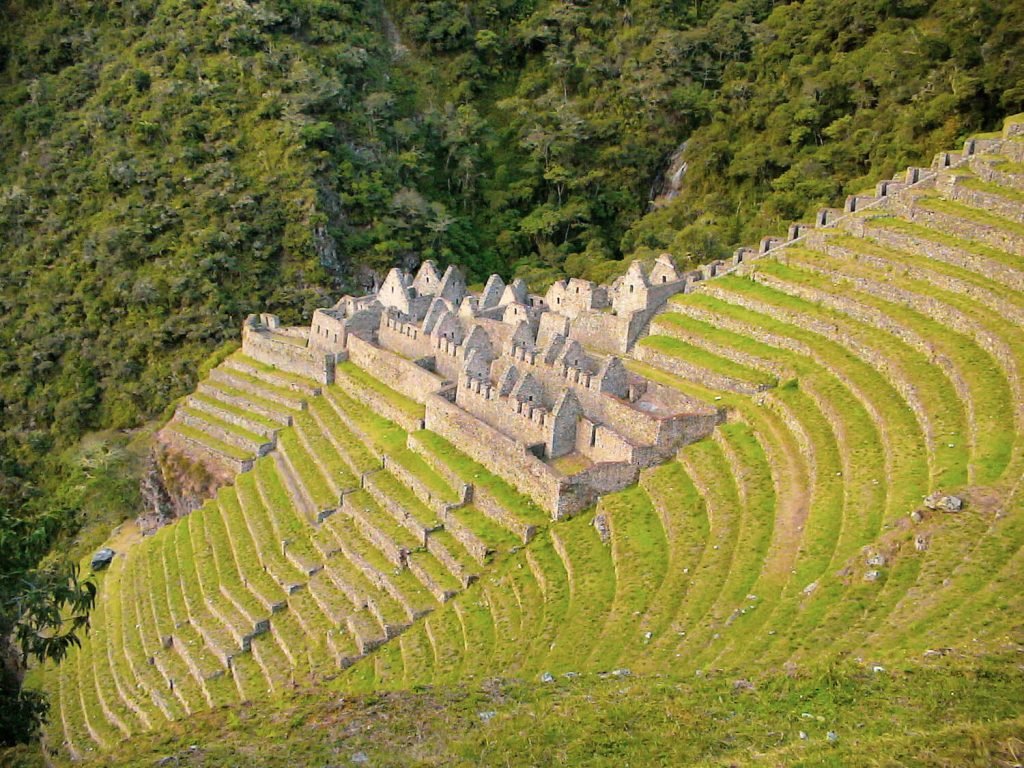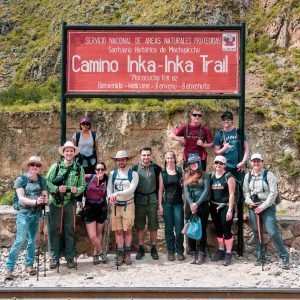1 review for Inca Trail to Machu Picchu 4 Days
Only logged in customers who have purchased this product may leave a review.





The Inca Trail 4 Days to Machu Picchu is one of the most popular trekking routes in South America. It takes you on a 43 km journey through the Andes Mountains, passing through ancient Inca ruins, cloud forests, and stunning mountain scenery. The highlight of the trek is, of course, arriving at Machu Picchu on the final day, where you’ll witness one of the most incredible archaeological sites in the world.
The Inca Trail 4 Days to Machu Picchu offers a unique experience that combines trekking, history, and nature. Here are some of the highlights of the trek:
Here is a day-by-day breakdown of the Inca Trail 4 Days to Machu Picchu:
Day 1: Beginning the Journey to Machu Picchu
Day 2: Conquering Dead Woman’s Pass
Day 3: Exploring Inca Ruins in the Cloud Forest
Day 4: Sunrise at the Sun Gate: Arrival at Machu Picchu
On the first day of our journey, we’ll start bright and early at Km 82, the beginning of the Inca Trail. We’ll start our trek by crossing a bridge over the Urubamba River and then hiking uphill for a while. Along the way, we’ll pass by some small villages and enjoy stunning views of the Andes Mountains.
After about 3 hours of hiking, we’ll reach Llactapata, an Inca archaeological site with some incredible terraces and buildings. We’ll take some time to explore and learn about the history of this fascinating place before continuing on to our first campsite at Ayapata. It’s a great spot to rest and recharge after a long day of hiking!
Details:
Today is one of the toughest days of the trek, but also one of the most rewarding! We’ll wake up early and start hiking uphill towards Dead Woman’s Pass, the highest point of the Inca Trail at 4,215 meters (13,828 feet) above sea level. The trail is steep and challenging, but we’ll take our time and rest as needed to reach the top.
Once we reach the pass, we’ll take a moment to catch our breath and enjoy the incredible views of the surrounding mountains. Then, we’ll begin our descent towards the second campsite at Pacaymayo. Along the way, we’ll see some more Inca ruins and pass through a variety of landscapes, from high mountains to lush valleys.
Details:
Today’s hike will take us through a beautiful cloud forest, where we’ll see a variety of plants, birds, and animals. We’ll also visit several Inca ruins along the way, including Runkurakay, Sayacmarca, and Phuyupatamarca. These sites are well-preserved and offer a glimpse into the incredible engineering and architecture of the Inca civilization.
After hiking for several hours, we’ll arrive at our third and final campsite at Wiñay Wayna. This site is particularly special because it’s surrounded by Inca terraces and offers a glimpse into the agricultural practices of the Inca people. We’ll enjoy a delicious dinner and get some rest before our final day of hiking.
Details:
Today is the day we’ve all been waiting for – we’ll finally arrive at Machu Picchu! We’ll wake up early and start hiking towards the Sun Gate, the entrance to the ancient city. It’s a challenging but rewarding hike, with stunning views of the surrounding mountains and valleys.
When we finally reach the Sun Gate, we’ll take a moment to catch our breath and enjoy the sunrise over Machu Picchu. Then, we’ll hike down to the city itself and enjoy a guided tour with a knowledgeable local guide. We’ll learn about the history and significance of Machu Picchu, and have plenty of time to take photos and explore on our own.
If you’re feeling adventurous, you can also hike up to Huayna Picchu or Machu Picchu Mountain (requires a separate ticket). These hikes offer incredible views of the city and surrounding landscape, but they are steep and challenging.
After our visit to Machu Picchu, we’ll take a bus and train back to Cusco, where we can relax and reflect on the incredible journey we’ve just completed. It’s a once-in-a-lifetime experience that you’ll never forget!
Details:
It’s important to wear comfortable and appropriate clothing on the Inca Trail. Here are some tips:
Here are some recommendations to make the most of your Inca Trail 4 Days to Machu Picchu experience:
One of the most important things to keep in mind when planning an Inca Trail trek is that you need a permit to hike the trail. These permits are limited and they sell out quickly, especially during peak season (June-August). To make sure you get a permit, it’s a good idea to book your trek well in advance, at least 6 months if possible.
The Inca Trail is a challenging trek that requires a moderate to high level of fitness. You’ll be hiking at high altitude, with steep inclines and descents, and covering long distances each day. It’s important to prepare for the trek by doing some training beforehand, such as hiking, running or doing other cardio exercises.
Altitude sickness can be a real concern on the Inca Trail, especially when you reach the highest point of the trek at Dead Woman’s Pass (4,215 meters/13,828 feet). To reduce your risk of altitude sickness, it’s recommended that you spend at least 2 days in Cusco acclimatizing to the altitude before starting the trek. It’s also important to stay hydrated throughout the hike by drinking plenty of water.
There are several essential items you’ll need to bring with you on the Inca Trail, including a sleeping bag, warm clothing for cold nights, comfortable hiking shoes, a hat, sunscreen, insect repellent, a rain jacket, a headlamp or flashlight, and a reusable water bottle. The tour company will provide tents and a duffel bag for your personal items.
The maximum group size for the Inca Trail trek is 16 people, including the guide and porters.
The Inca Trail is a fragile ecosystem, and it’s important to minimize your impact by following Leave No Trace principles. This includes carrying out all trash and waste, staying on designated trails, and being respectful of the local culture and environment.
The best time to trek the Inca Trail is during the dry season, which runs from May to September. However, it’s important to keep in mind that the Andean weather can be unpredictable, and rain is possible even during the dry season. If you’re trekking during the rainy season (November to April), make sure to bring waterproof gear and prepare for muddy trails.
Most tour companies will provide all meals during the trek, including breakfast, lunch, and dinner. The food is usually a mix of Peruvian and international cuisine and is prepared by a cook who travels with the group. If you have any dietary restrictions or preferences, make sure to inform the tour company beforehand.
Porters are an important part of the Inca Trail trek, as they carry the group’s gear and supplies.
The Inca Trail is not just a physical challenge, but also a cultural and historical experience. Make sure to take time to learn about the history and culture of the Incas, who were the builders of Machu Picchu and the Inca Trail. You’ll also have the opportunity to visit several Inca ruins along the way, including Wiñay Wayna and Intipata.
The highlight of the Inca Trail trek is, of course, the arrival at Machu Picchu. You’ll arrive early in the morning on the fourth day and have a guided tour of the ancient citadel. Make sure to take time to explore the site and take in the stunning views of the surrounding mountains and valleys.
Only logged in customers who have purchased this product may leave a review.
 Inca Trail to Machu Picchu 4 Days
Inca Trail to Machu Picchu 4 Days
Peter –
I recently had the pleasure of embarking on a 4-day Inca Trail trek to Machu Picchu with Xplore Cusco, and I must say, it was an unforgettable experience. As a seasoned hiker, I can confidently say that Xplore Cusco did an exceptional job in organizing and executing this tour.